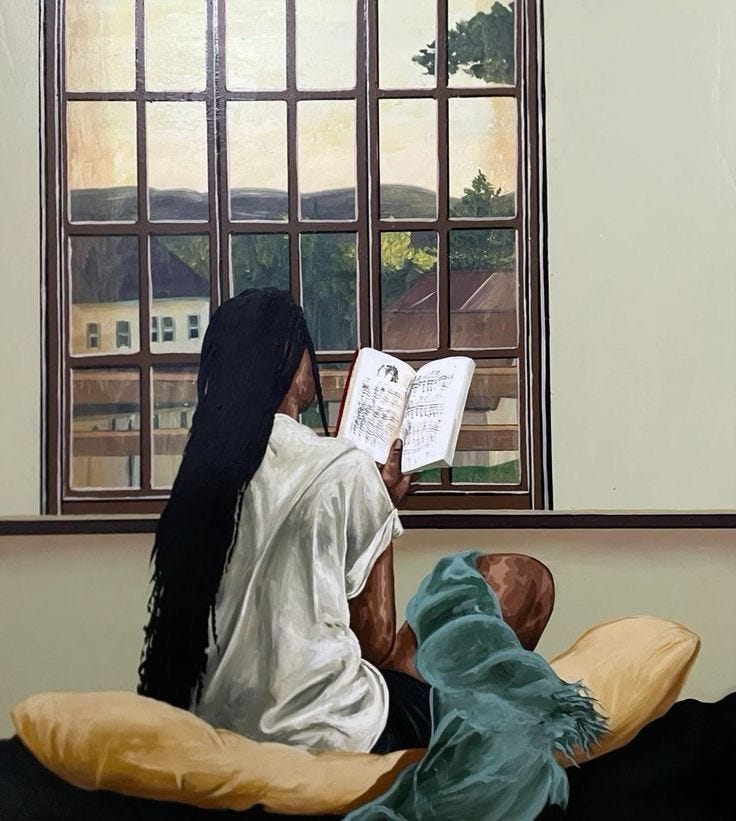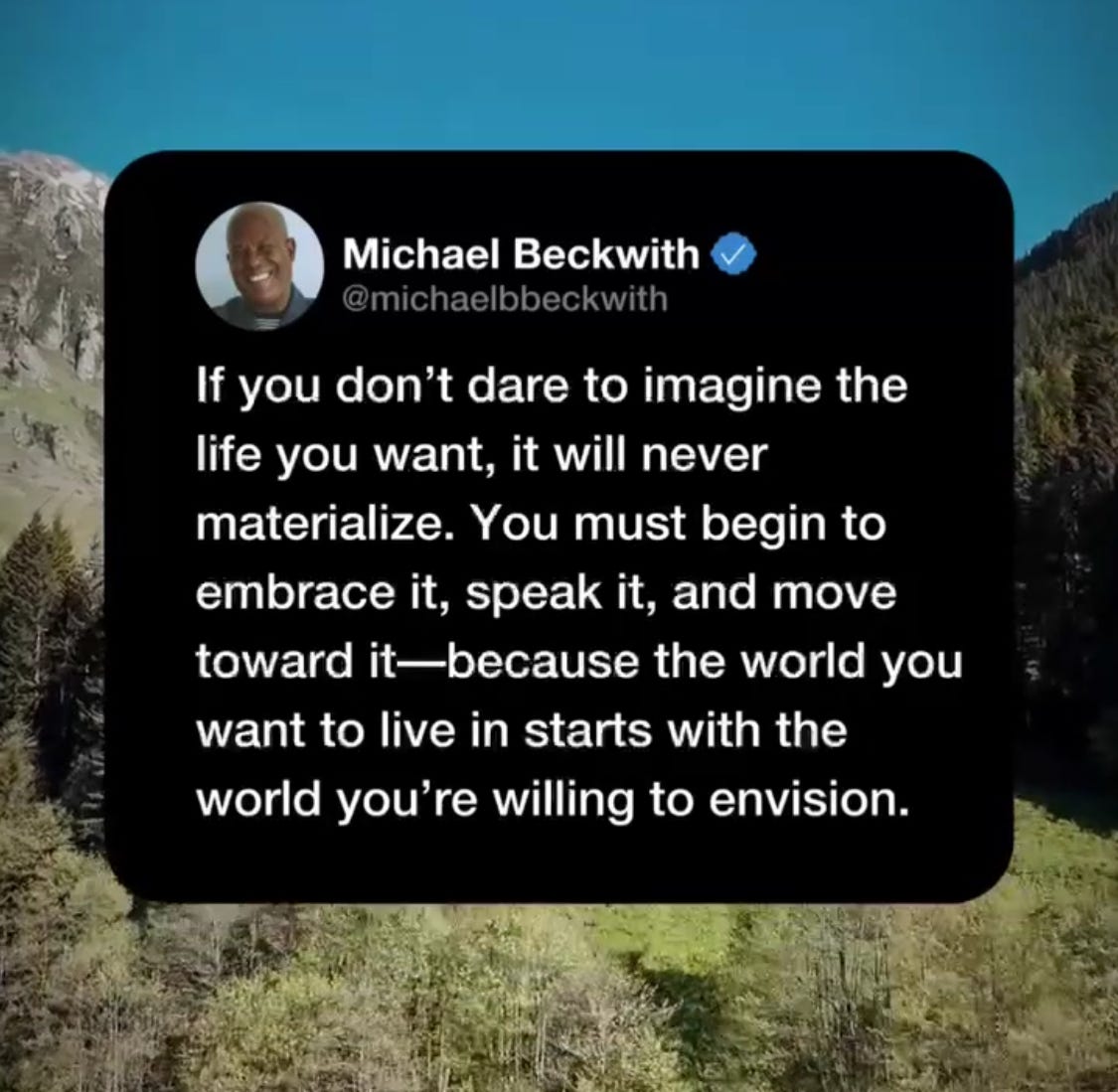This year has demanded a kind of stillness from me that I didn’t see coming.
The first six months were full of upheaval, adjustment, and transition. The upheaval came with the fires—literal disruption and displacement. The adjustment came with moving in with my father. And the transition came with starting grad school at fifty, stepping fully into a new chapter of my life. Everything in my world shifted—my location, my priorities, my sense of time. I’ve spent more of this year in reflection than in motion, and that stillness, uncomfortable as it’s been, has carved out space for something deeper: clarity.
Spending six weeks in Paris gave me the distance I didn’t know I needed—not just from my environment, but from the noise of my own routine. For the first time in a long time, I had space to be still and dream. I reflected on everything the first half of the year had asked of me, but more importantly, I began to think critically about what I wanted next. Not just in my work, but in my life. Not just in theory, but in practice. Paris became a mirror—and a portal. It showed me what was possible.
A few weeks later, someone who has come to mean a great deal to me sent me a series of questions—reflective prompts, really. Thoughtful. Intentional. Not the kind of questions you answer casually in a Google doc. These were the kind that sit with you. That confront you. And in reading them, I realized: I’ve been living this vision, circling it, building toward it—but I hadn’t named it. I hadn’t given it language. I hadn’t claimed it with my whole chest.
Writing this vision plan cracked something open. It wasn’t just about mapping out goals or clarifying a five-year plan. It was about giving voice to the future I’m building—and acknowledging that it’s already in motion. It made me reckon with what I want, what I no longer want to carry, and what I’m actively calling in.
What’s wild is that he and I had been talking for weeks about the importance of having a vision plan. And I thought we were talking about the same thing. I do vision every day—when I journal, when I pray, when I imagine my life beyond what I can see. I mean, I literally have a visioning journal. A whole notebook just for mapping the life I want. But this was different. This wasn’t just imagining. This was defining. Declaring. Saying the quiet parts out loud.
To be honest, none of this was new. I’ve written about these things before—many times. In my visioning journal, in prayer, in quiet conversations with myself. But writing the vision plan made me take those dreams out of the notebook and into the light. It made me think more deeply, more intentionally. It asked me to stop romanticizing the life I want and start structuring it.
In my conversations with the friend who sent the prompts, we talk often about what comes after this chapter—what it means to be prepared once school ends. He sees this vision plan the way you’d see a business plan: not just as reflection, but as strategy. And he’s right. Sitting with these questions didn’t just help me name what I want—they helped me start approaching my career from a different perspective. Not just as a curator or cultural worker, but as someone building an entire ecosystem: of support, of impact, of sustainability.
It helped me clarify my curatorial practice and cultural work—not as a career pivot, but as a calling. I’m not here to chase relevance. I’m here to build something that expands what’s possible—for artists, for audiences, for institutions, and for myself. I’m not just curating exhibitions. I’m curating space, memory, meaning, and access. My work is rooted in equity, care, and the belief that art should be a site of connection—not separation. That’s not an aesthetic choice. That’s a spiritual one.
It also made me think critically about my support system—not just who is around me now, but who I need beside me to thrive. I want to be in community with people who challenge me, support me, and remind me of the vision when I forget. It made me reflect on how my spiritual practice—journaling, prayer, movement, visioning—is not separate from the work. It is the work. It’s how I stay aligned, how I stay open, how I stay grounded.
It made me own that a blnk spce isn’t just a concept—it’s a vision I’m actively building. A nonprofit that will include an artist residency, a gallery space, and a public museum designed to carry weight in the art world. A space that welcomes those who’ve been left out. A space that makes people feel seen and supported. A space that says: you belong here, and your work matters.
It made me get honest about what I want—not just professionally, but personally. I want homes in the cities that move me: Los Angeles, Paris, Mexico City. I want to be well, to be whole, to be surrounded by people who reflect back the fullness of who I am. And yes—I want to be in love. Deeply. Intentionally. I want to share my life, my space, and my vision with someone who meets me there.
And I admitted something else: I’m not interested in sacrifice. I’ve already survived the life that wasn’t mine. This next chapter is about intention and purpose. I’m not chasing someone else’s idea of success. I’m building a life that’s aligned with who I actually am—and that’s the only metric that matters.
I didn’t write this plan to impress a funder. I didn’t write it to pitch a project. I wrote it because I needed to see my own future clearly. I needed to stop negotiating with it.
This process reminded me that visioning is a practice. A responsibility. A way of choosing yourself again and again, even when the world tries to offer you something safer, smaller, or more “realistic.” And when it’s paired with clarity around your purpose, it becomes a powerful compass. Getting clear on what you want—and why—allows you to move through life with intention. Not just reacting to what shows up, but actively creating what you know you’re meant to build.
If you’ve been circling your own vision—talking around it, daydreaming about it, tucking it away in journal pages—I want to invite you to name it. To sit still long enough to hear it clearly. To ask yourself the hard questions. And then answer them like your future depends on it. Because it probably does.
This is why I launched The Intersect. Not just to share what I’m working on—but to reflect on the life I’m building and the questions I’m asking as I build it. To offer a space for honest reflection, cultural conversation, and creative alignment. Because we need more spaces where vision is honored, and more stories about what it looks like to live intentionally—even in the mess, even in the unknown.
I’m still on the path. But I’m not wandering. I’m walking toward a life that was always meant for me. And I hope, in some way, this helps you walk toward yours.






